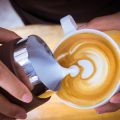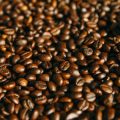1. Understanding the Basics: What Are Espresso Beans and Regular Coffee Beans?
If you walk into a typical American coffee shop or browse your local grocery store, you’ll likely see bags labeled “espresso beans” and others simply marked as “coffee beans.” At first glance, this can be confusing. Aren’t all coffee beans basically the same? Let’s break down what makes espresso beans different from regular coffee beans and why it matters for your daily cup.
Espresso Beans vs. Regular Coffee Beans: The Definitions
Espresso beans aren’t a special type of bean, but rather coffee beans that have been roasted and prepared with espresso brewing in mind. Regular coffee beans, on the other hand, refer to any beans intended for drip, pour-over, French press, or other common brewing methods in the US.
Main Differences Between Espresso Beans and Regular Coffee Beans
| Espresso Beans | Regular Coffee Beans | |
|---|---|---|
| Roast Level | Usually dark roast for bold flavor and rich crema | Light, medium, or dark roast depending on preference |
| Grind Size (Typical Use) | Very fine grind for espresso machines | Coarse to medium grind for drip, pour-over, or French press |
| Common Brewing Method in the US | Espresso machine (high pressure extraction) | Drip coffee makers, pour-over setups, French presses |
| Flavor Profile | Bolder, more intense, sometimes with chocolatey notes | Milder, brighter, more varied flavors depending on origin and roast |
| Labeled As… | “Espresso Roast” or “Espresso Beans” | “Coffee Beans,” “Drip Roast,” or just by origin/roast level |
The Origins: Are They Different?
Both espresso and regular coffee beans usually come from either Arabica or Robusta plants—just like most coffee consumed in America. The difference lies in how they are roasted and sometimes how they’re blended. Espresso blends may include a mix of beans selected to create a strong, balanced shot under high pressure.
Typical Uses in American Coffee Culture
In the US, espresso beans are most often used for making shots of espresso—either straight or as the base for drinks like lattes and cappuccinos. Regular coffee beans are used in everything from big pots at diners to single-cup pour-overs at home. Ultimately, you can brew coffee using any bean; it’s the roast level and grind size that make the real difference when choosing between espresso and regular options.
2. Roast Level Differences: American Preferences and Flavor Profiles
When it comes to espresso beans versus regular coffee beans, the roast level is one of the first things Americans notice. While both types of beans can technically come from the same coffee plant, how they are roasted makes a huge difference in flavor, aroma, and even how you enjoy your cup.
How Roast Levels Differ Between Espresso and Regular Coffee Beans
Espresso beans are usually roasted darker than regular coffee beans. This is because a dark roast brings out a bold, rich flavor that stands up well to the high-pressure brewing method used for espresso. Regular coffee beans, on the other hand, might be roasted light, medium, or dark—depending on what kind of taste people want.
| Type | Typical Roast Level | Flavor Profile |
|---|---|---|
| Espresso Beans | Dark Roast | Bold, bittersweet, chocolatey, low acidity |
| Regular Coffee Beans | Light/Medium/Dark Roast | Fruity (light), balanced (medium), smoky (dark) |
American Preferences: How People Drink Their Coffee
In the U.S., most people still reach for medium or dark roasts when making their morning pot of drip coffee. These roast levels offer a smooth taste that isn’t too bitter or too sharp. For espresso drinks like lattes and cappuccinos—which are super popular at American coffee shops—a darker roast is almost always used because it pairs well with milk and creates a strong base flavor.
Common Ways Americans Enjoy Different Roasts
| Coffee Type | Popular Brew Methods | Why This Roast? |
|---|---|---|
| Espresso Drinks (Lattes, Cappuccinos) | Espresso Machine | Dark roast gives rich crema and strong flavor that stands out with milk or syrups. |
| Regular Coffee (Drip, Pour Over) | Coffee Maker, Pour Over, French Press | Medium roast offers balance; light roast highlights fruity notes; dark roast adds smokiness. |
The Takeaway on Roast Levels in America
If you love espresso drinks, you’re probably enjoying a dark roasted bean with deep, chocolatey notes. If you prefer classic brewed coffee, you have more options—ranging from bright and fruity light roasts to robust dark roasts. The best part? In America’s diverse coffee scene, there’s truly something for everyone’s taste buds.

3. Grind Size Matters: Brewing Methods Popular in the US
When it comes to making a great cup of coffee, grind size is one of the most important factors—especially when comparing espresso beans and regular coffee beans. The way you grind your beans has a big impact on how your coffee tastes, depending on the brewing method you use. Lets break down why this matters and look at some popular American brewing methods.
Why Grind Size Is So Important
Espresso requires a very fine grind, almost like powdered sugar. This is because espresso machines use high pressure to force hot water through the coffee grounds in a short amount of time (usually about 25-30 seconds). A fine grind creates resistance for the water, allowing for proper extraction of flavors and that classic espresso crema.
On the other hand, drip coffee—which is incredibly popular across American households—uses a medium grind, similar to coarse sand. Drip machines let hot water flow through the grounds more slowly than espresso machines, so a coarser grind prevents over-extraction and bitterness.
Popular Brewing Methods in the US
| Brewing Method | Typical Grind Size | Common Usage |
|---|---|---|
| Espresso Machine | Very Fine | Cafés, home espresso bars, specialty shops |
| Drip Coffee Maker | Medium | Most American homes and offices |
| French Press | Coarse | Weekend mornings, brunch spots, home enthusiasts |
| AeroPress | Fine to Medium-Fine | Coffee geeks, travelers, students |
| Pourover (e.g., Chemex, Hario V60) | Medium to Medium-Coarse | Third-wave cafés, home baristas |
| Keurig (K-Cup) | Pre-ground (Medium-Fine) | Quick convenience at home or work |
The Takeaway on Beans and Brewing Style
If youre buying espresso beans but using them in a regular drip coffee maker without changing the grind size, you might end up with coffee thats too strong or bitter. Likewise, using regular coffee beans ground too coarsely for an espresso machine can lead to weak, sour shots. Matching your bean type and grind size to your brewing method is key for getting that perfect cup Americans love—whether its a rich shot of espresso or a smooth mug from your drip brewer.
4. Caffeine Myths: Sorting Out the Facts for American Coffee Drinkers
If you’re a coffee lover in the US, you’ve probably heard plenty of rumors about espresso and regular coffee when it comes to caffeine content. Let’s clear up some common misconceptions and make sure you know exactly what you’re getting in your cup.
Espresso vs. Regular Coffee: Which Has More Caffeine?
The biggest myth out there is that espresso always has more caffeine than regular coffee. The truth is, it depends on how much you drink. Espresso is more concentrated, but we usually drink it in small amounts—think a 1-ounce shot versus an 8-ounce mug of drip coffee.
Caffeine Content Comparison (Typical Servings)
| Beverage | Serving Size | Average Caffeine (mg) |
|---|---|---|
| Espresso | 1 oz (single shot) | 60-75 mg |
| Drip Coffee | 8 oz (regular cup) | 80-120 mg |
This table shows that a full cup of regular coffee usually gives you more caffeine than a single shot of espresso. But ounce for ounce, espresso is stronger.
What Does This Mean for American Coffee Drinkers?
If you like sipping on big mugs throughout the day, you’re probably getting more caffeine from your regular coffee than from a quick espresso shot. For those who love their lattes or Americanos, remember that drinks with multiple shots can quickly add up in caffeine.
Key Takeaways for Your Coffee Routine
- If you want a quick hit of caffeine with rich flavor, go for espresso—but watch your serving size.
- If you enjoy lingering over your coffee or need to cut back on caffeine, regular drip coffee might actually deliver less per sip, but often more overall per cup.
- Coffee shop drinks can vary, so ask your barista how many shots are in your latte or cappuccino if you’re counting caffeine.
No matter your style, knowing these facts helps you choose the right brew for your day—without falling for old myths about espresso vs. regular coffee.
5. Buying and Labeling in the American Market
When shopping for coffee in the US, you’ll notice a lot of choices and sometimes confusing labels. Understanding how American coffee brands label espresso beans versus regular coffee beans can help you pick the right bag for your needs.
How US Brands Label Espresso and Regular Beans
In American stores, most bags labeled “Espresso” don’t actually contain a special type of bean—they’re usually blends or roasts that the brand recommends for espresso brewing. Meanwhile, bags labeled “Coffee” or “Drip Coffee” are meant for regular drip machines, pour-over, or French press. The actual beans are often the same species (usually Arabica), but they’re roasted and sometimes ground differently.
What to Look for on Packaging
| Label | What It Means | Best For |
|---|---|---|
| Espresso Roast | Darker roast; intended for espresso-style drinks; can be used in any method if you like bold flavor | Espresso machine, moka pot, strong coffee lovers |
| Coffee Beans / Drip Coffee / Classic Roast | Medium or light roast; designed for drip coffee makers or pour-over | Drip machines, pour-over, French press |
| Whole Bean | Un-ground beans; gives you control over grind size for any brewing method | Anyone with a grinder at home; fresher taste |
| Ground for Espresso | Finer grind size; ready for espresso machines or moka pots | No grinder needed; quick use in espresso gear |
| Ground Coffee (Medium/Coarse) | Larger grind size; good for drip or French press | No grinder needed; standard coffee makers |
Marketing Language to Watch For
Coffee packaging in America often uses terms like “Bold,” “Smooth,” “Rich,” or even “Italian Roast.” These words aren’t regulated—brands use them to suggest flavor profiles or strength. If you want classic espresso taste, look for “dark roast” or “espresso blend.” If you prefer lighter flavors, choose “medium roast” or “breakfast blend.” Also, check if the bag says “suitable for all brewing methods”—this means you can experiment at home.
Quick Tips for American Shoppers:
- If it says “Espresso,” it’s about the recommended brew style, not the bean itself.
- Darker roasts = bolder flavors (often labeled as espresso).
- Lighter roasts = milder taste (look for breakfast or house blends).
- Whole bean gives you flexibility if you own a grinder.
- The grind size matters: Fine grinds suit espresso, while medium/coarse work best with drip and French press.
6. Home Brewing Tips: Making the Most of Your Beans
Storing Your Beans: Keep It Fresh
If you want your morning cup to taste its best, proper storage is key. Both espresso beans and regular coffee beans lose flavor when exposed to air, light, heat, or moisture. For Americans who often buy coffee in bulk or keep a variety of beans on hand, here’s how to make them last:
| Do | Dont |
|---|---|
| Store beans in an airtight container | Leave bags open or unsealed |
| Keep containers in a cool, dark place (like a pantry) | Store beans on the countertop or near windows |
| Buy whole beans and grind as needed | Buy pre-ground coffee for long-term storage |
Grinding: Get the Texture Right
The grind size makes a huge difference, especially between espresso and regular coffee. Here’s a quick guide for American home brewers:
| Coffee Type | Grind Size | Common Brew Method |
|---|---|---|
| Espresso | Very fine (almost powdery) | Espresso machine, Moka pot |
| Regular Coffee (Drip) | Medium (like sand) | Drip coffee maker, pour over |
| French Press | Coarse (like sea salt) | French press, cold brew |
A Few Quick Tips:
- If possible, use a burr grinder for more consistent results.
- Only grind what you need for immediate use—ground coffee loses flavor fast!
- If you’re using an espresso machine at home, dial in your grind so that your shot pulls in 25-30 seconds.
Brewing: Get the Best Out of Every Bean
No matter if you love strong espresso shots or classic drip coffee, technique matters. Here are some pointers for getting it right at home:
- Water Quality: Use filtered water for better taste—tap water with lots of minerals can mess with your flavor.
- Coffee-to-Water Ratio: For Americans using standard measures:
- Espresso: About 18-20g of coffee per double shot (about 2 oz liquid)
- Drip Coffee: About 2 tablespoons of ground coffee per 6 oz of water (adjust to taste)
- Brew Time: Don’t rush! Espresso should take about 25-30 seconds; drip coffee usually takes 4-5 minutes.
Troubleshooting Common Problems:
- Bitter taste? Try a coarser grind or lower temperature.
- Sour taste? Try a finer grind or increase brew time.
The Bottom Line for Home Brewers:
No matter which bean you choose, fresh storage, proper grinding, and careful brewing will help you enjoy café-quality coffee right at home—just like Americans love it.


